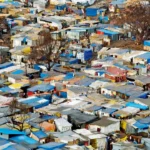Skincare isn`t a one-size-fits-all journey, and as the seasons change, so should your routine. Navigating the shift from the humid monsoon season to the drier post-monsoon months can be challenging for your skin.
This transitional period often brings a frustrating mix of lingering oiliness, stubborn breakouts, and new concerns like dehydration and sensitivity. However, making a few simple, targeted adjustments to your skincare routine and lifestyle, can easily help you maintain skin that`s resilient to seasonal changes.
This comprehensive guide, featuring expert advice from leading dermatologists, provides a clear roadmap to help your skin thrive as the weather changes.
Most common skin concerns in September
As the high humidity of the monsoon season begins to subside, your skin faces a new set of challenges. Even though acne flare-ups and excess oiliness are common during the monsoon, Dr Prachi B Bodkhe, dermatologist at Envi Aesthetics, says September marks a shift where concerns like dullness, sensitivity, and dehydration become more prominent. “This is because the dropping humidity can destabilise the skin’s protective barrier, causing it to lose moisture more quickly and become prone to inflammation and breakouts. Many patients also complain of uneven pigmentation or accentuated once the rain subsides. Frizzy unmanageable hair, increased hairfall, dandruff is amongst common hair related issues commonly seen in monsoon,” she shares.
How does a change in humidity from high to low affect the skin? “Humidity often masks dehydration, but once it drops, underlying dryness and sensitivity appear. This shift from high-humidity sticky air to a relatively drier environment can destabilize the skin’s protective barrier. The skin loses moisture faster, feels tight, and becomes more prone to inflammation and breakouts. Formulations with ceramides, squalane, or panthenol help restore lipids and reduce transepidermal water loss,” explains Bodkhe.
Exfoliation for post-monsoon
Exfoliation plays a key role in keeping the skin clear during this transitional phase. “With increased oil secretion dead skin cells and sebum can easily clog pores, triggering acne. At the same time, over-exfoliation can aggravate dryness and compromise the barrier.
Balance is the key. Limit AHA based exfoliation to once or twice a week depending on your skin type. Always follow with the hydrating creams or masks,” cautions Bodkhe.
Step-by-step skincare routine for post-monsoon acne
September month leaves a humid environment that keeps the skin sticky, sweaty and prone to breakouts, while the season slowly changes to drier weather that can dehydrate the skin barrier. “This combination often leads to oiliness, clogged pores and dullness,” states Dr Madhurya Gogineni, dermatologist at Zennara Clinics, Hyderabad. Below she outlines a simple routine that can help your skin recover:
Step 1: Gentle cleansing
Start and end your day with a mild, pH-balanced cleanser. This removes dirt, sweat, and excess oil without stripping away natural moisture. If you wear makeup, make sure to double-clean in the evening.
Step 2: Mild exfoliation
Exfoliating two or three times a week helps prevent clogged pores that lead to acne. Look for products with salicylic acid, which clears oil from deep inside the pores. Avoid harsh scrubs as they can irritate your skin, especially if you already have active breakouts.
Step 3: Lightweight moisturiser
Many people skip moisturiser when their skin feels oily, but that can backfire. Choose a gel-based or oil-free moisturizer with ingredients like hyaluronic acid or niacinamide. These hydrate without making your skin greasy and can even reduce redness and excess oil over time.
Step 4: Spot treatments
If you are dealing with frequent acne, you can add a serum with ingredients like azelaic acid or salicylic acid. These ingredients help reduce inflammation and improve overall skin texture.
Step 5: Sunscreen every day
Sun protection is important irrespective of the month. Pick a sunscreen that is gel-based or water-based with SPF 50 or higher, so it feels light and doesn’t clog pores. Apply it every morning and reapply if you are outdoors for long hours.
Gogineni advises to keep certain habits in place, “Keep your pillowcases and towels clean, as they can harbor bacteria. Avoid touching or picking at your face to prevent spreading infection. Drink enough water and eat a balanced diet as skin health reflects overall health.”
She stresses that post-monsoon skincare is all about balance. “Cleanse gently, hydrate, treat breakouts early and protect your skin from the sun. Introduce one new product at a time and watch how your skin reacts. Following this routine consistently through September will help your skin recover from the monsoon and keeps it healthy,” Gogineni concludes.
The importance of lifestyle and diet
As we move from the rainy monsoon months into September’s post-monsoon season, many people notice sudden changes in their skin. This transition period can be tricky, but the good news is that a few simple adjustments to both your lifestyle and skincare routine can make all the difference. “Most people tend to focus only on what products they’re putting on their face. While that’s important, healthy skin always starts from within. What you eat, how well you hydrate, and even basic hygiene practices play just as big a role in keeping your skin clear and resilient,” poses Dr Mikki Singh, dermatologist and cosmetologist, founder and medical director at Bodycraft Clinics.
Hydration
After months of sticky, humid weather, your body still loses fluids quickly, and the skin can look dull or congested if you’re not drinking enough. Aim for at least two to three litres of water every day. If plain water feels monotonous, try coconut water, buttermilk, or fruit-infused water—they not only hydrate but also provide electrolytes and micronutrients.
Nourish from within
Your diet is another cornerstone. Post-monsoon is the perfect time to load up on water-rich fruits and vegetables. Think of cucumbers, tomatoes, papayas, and citrus fruits. These foods don’t just cool and hydrate from the inside out, they also pack antioxidants and vitamins like C and E, which help repair skin, support collagen, and protect against environmental stress.
Foods to embrace
Seeds, fish, and avocados (if you tolerate them) are excellent sources of omega-3 fatty acids, which calm inflammation and strengthen the skin barrier.
Avoid skipping this festive season
On the flip side, greasy, sugary, and heavily processed foods tend to spike inflammation and oil production, which can make acne worse. While occasional indulgence is fine, try to keep junk food to a minimum, especially during this sensitive seasonal change.
Keep it hygienic
With lingering humidity and sweat, bacteria can transfer easily from hands to face. Wash your face with a mild cleanser twice a day and after heavy sweating and resist the temptation to touch or pick at your skin.











